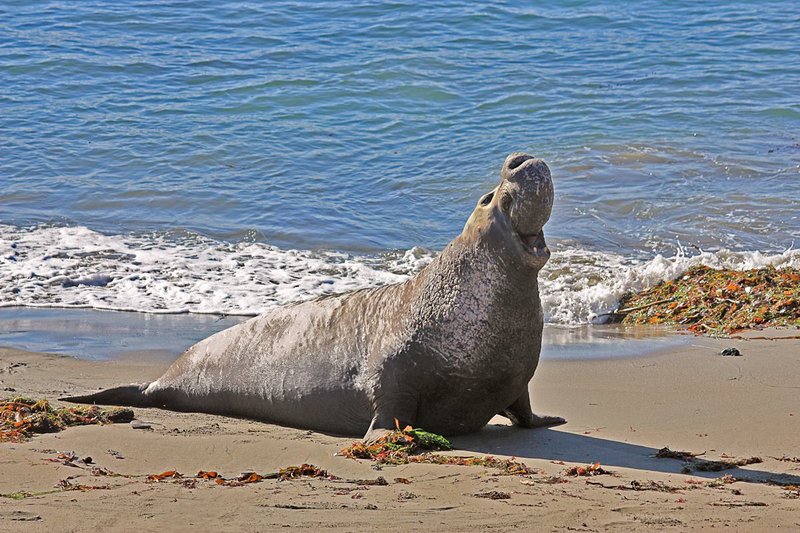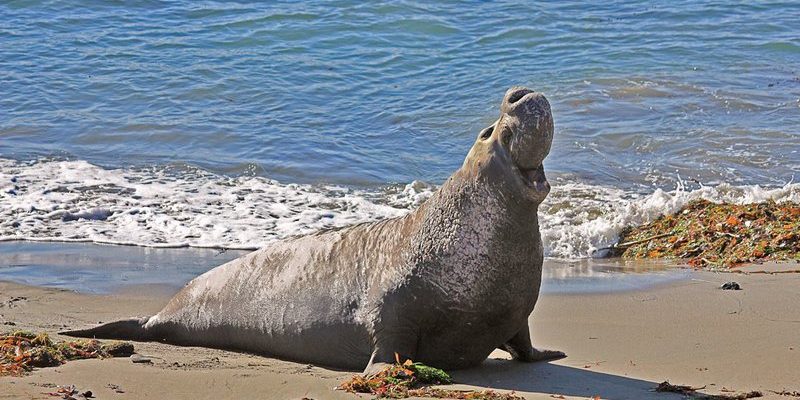
Imagine a creature that can weigh as much as a small car and has a nose that resembles a giant bagpipe. That’s the elephant seal for you! These animals are not just impressive in size; they are also amazing in their behavior and life cycle. Let’s dive into the world of the elephant seal and uncover some incredible facts about these unique animals.
1. Size Matters: The Heaviest Marine Mammal
Elephant seals are known to be the largest pinnipeds, which include seals and sea lions. Adult males can weigh up to 4,500 pounds and can measure over 20 feet in length! To give you a better idea, that’s as heavy as a small car and as long as a Volkswagen Beetle laid end to end.
The weight difference between males and females is also striking. While males can be massive, females are considerably smaller, averaging around 900 pounds. This size difference is a result of sexual dimorphism, which is common in many species, where males and females exhibit different traits. You might see elephant seals lounging on the beach, their flabby bodies sprawled out and soaking up the sun, looking quite comfortable.
2. The Name’s Origin: Why “Elephant”?
You might be wondering where the name “elephant seal” comes from. It’s all about their distinctive features. Adult male elephant seals have a large, inflatable nose that resembles an elephant’s trunk. When they vocalize, especially during the breeding season, this nose creates deep, booming sounds that can be heard from afar.
This impressive nose serves more than just a vocal purpose. It plays a role in attracting mates and establishing dominance. So, if you ever hear a loud roar while at the beach, just know it may be a male elephant seal trying to impress the ladies!
3. Remarkable Diving Skills
Elephant seals are champions when it comes to diving. They can hold their breath for up to two hours while plunging to depths of over 5,000 feet in search of food. That’s deeper than most submarines can go!
What’s even more remarkable is how they manage this feat. Their bodies are adapted for extreme pressure, with special adaptations that allow them to store oxygen efficiently and prevent nitrogen buildup in their bloodstream. This ability to dive deeply helps them hunt for fish and squid, which are their main sources of nutrition.
4. Unique Breeding Habits
Breeding season is a wild time for elephant seals. Males gather on the beaches during the breeding season, usually from December to March, to establish their territory. They engage in fierce battles, often resulting in injuries, to impress females and dominate their breeding area.
Once a female chooses a mate, she’ll give birth to a pup after a gestation period of about eleven months. After giving birth, she suckles her pup for about a month before heading back to sea to feed herself. It’s a fascinating cycle of life that showcases the raw power and the nurturing side of these magnificent creatures.
5. A Global Presence with a Local Twist
Elephant seals are found in various locations around the world, primarily along the coasts of the Pacific Ocean. The Northern elephant seal can be spotted from California to British Columbia, while the Southern elephant seal prefers the waters around Argentina and the sub-Antarctic islands.
Interestingly, the populations of these seals were once near extinction due to hunting in the 19th century. Today, conservation efforts have led to a remarkable recovery, with numbers climbing back into the hundreds of thousands. It’s a testament to the resilience of nature when given a chance.
6. The Power of Migration
If there’s one thing elephant seals know how to do, it’s migrate. They embark on epic journeys that can exceed 2,000 miles each way! After breeding and nursing, both males and females will head towards distant feeding grounds.
What’s even more fascinating is their migratory pattern. They tend to travel to the same spots each year, possibly using the Earth’s magnetic fields and other environmental cues to navigate. It’s as if they have an internal GPS system guiding them across the vast ocean.
7. Adaptations for Life at Sea
Living in such a demanding environment requires serious adaptations. Elephant seals have developed a thick layer of blubber, which helps insulate them from cold temperatures found in the deep sea. This blubber also serves as an energy reserve during long migrations when food is scarce.
Additionally, their large, webbed flippers allow for powerful swimming. They can reach speeds of up to 25 miles per hour when swimming short distances, making them agile predators in the water. It’s nature’s perfect design for survival, enabling them to thrive in a challenging habitat.
8. Vocalizations and Communication
Communication plays a pivotal role in the social structure of elephant seals. Males and females both use a variety of vocalizations to convey messages. At the breeding grounds, the deep barks and growls of the males can be quite an impressive symphony.
Moreover, these sounds are crucial during mating season, helping establish dominance and attract mates. Researchers have even discovered that these vocalizations can change based on the seal’s geographical location, showcasing their adaptability and social behavior.
9. Conservation Success Stories
Thanks to conservationists and legal protections, elephant seals have made a remarkable comeback. Once hunted to near extinction, their numbers have surged due to dedicated efforts that focus on habitat protection and awareness.
Organizations have worked hard to educate the public about these magnificent animals, promoting their conservation. Today, seeing a thriving population of elephant seals basking on the shores is a hopeful reminder of what can be achieved when we protect our wildlife.
10. Fascination Continues: A Window Into Marine Life
Elephant seals, with their unique behaviors and fascinating adaptations, offer an incredible window into the complexities of marine life. They remind us of the beauty of nature and the importance of preserving it for future generations.
So, the next time you find yourself at a beach where elephant seals gather, take a moment to observe these gentle giants. They have stories to tell—stories of survival, adaptation, and the wonders of the ocean. Nature is truly captivating, and elephant seals are just one of its many marvels.
In conclusion, whether you’re a seasoned wildlife enthusiast or just someone curious about the animal kingdom, the elephant seal is a creature worth knowing more about. They’re not just big animals lounging on the beach; they’re a vital part of our ecosystem and an emblem of conservation success. So, let’s celebrate these fascinating marine mammals and always strive to protect their natural habitats!

